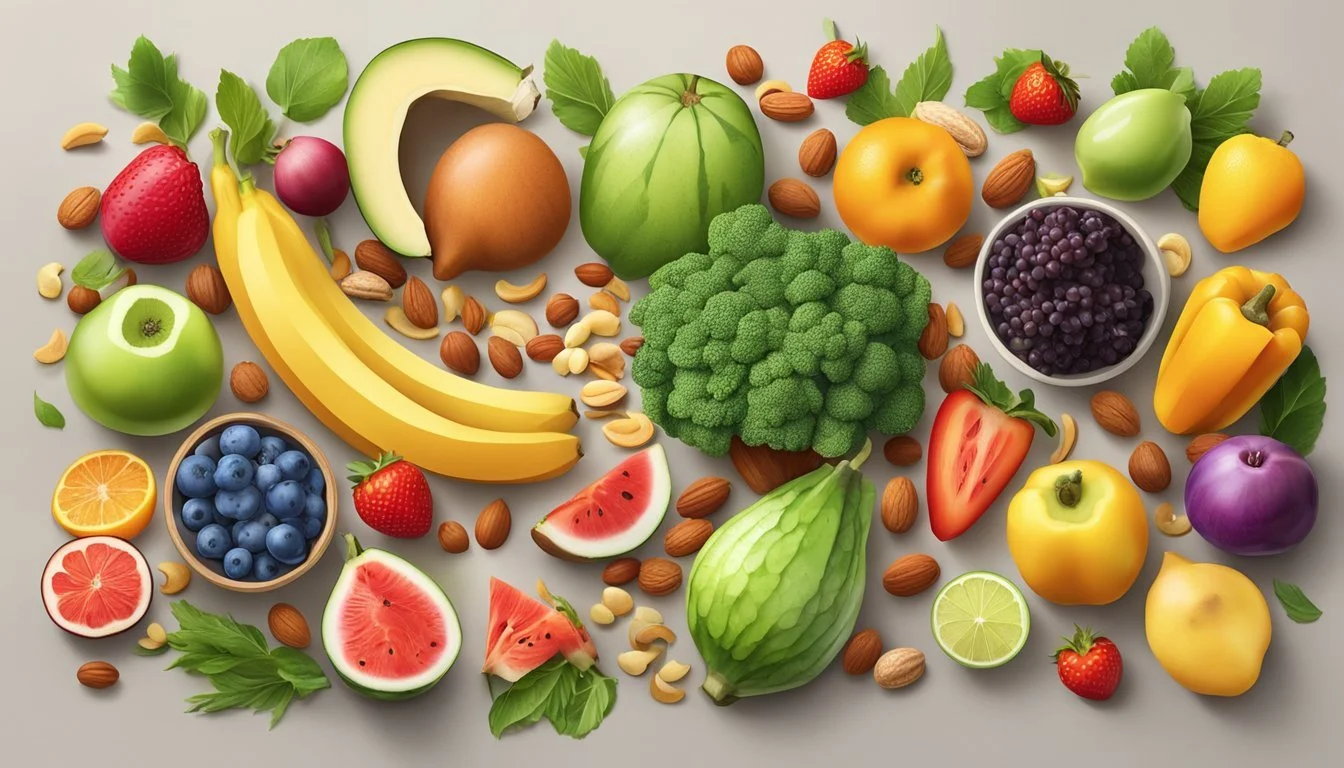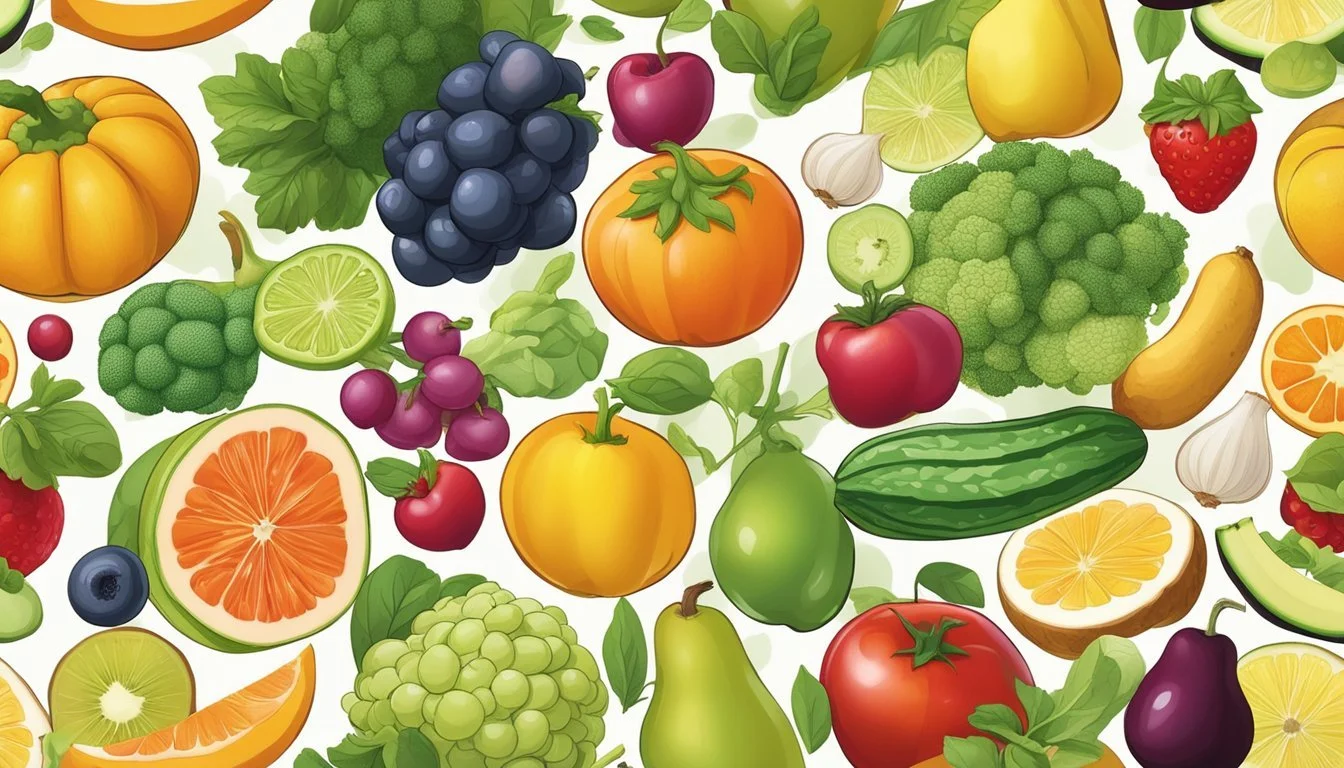Paleo Diet and Skin Elasticity
Discover the Key Nutrients for Youthful, Firm Skin
The relationship between diet and skin health is an area of growing interest, with specific dietary patterns often linked to the improvement of skin elasticity and overall complexion. The Paleo diet, with its emphasis on whole, unprocessed foods, is one such pattern that may confer benefits for skin health. This diet, which mirrors the nutritional habits of our Paleolithic ancestors, includes foods that are high in key nutrients beneficial for maintaining and improving skin elasticity, such as protein, Omega-3 fatty acids, and various vitamins and minerals.
An essential component of skin health is its elasticity, which allows it to stretch and return to its original shape. Skin elasticity is largely due to two proteins: collagen and elastin. The Paleo diet supports the synthesis of these proteins by supplying the body with adequate protein from sources like grass-fed meats and seafood. These proteins are fundamental building blocks for firm, healthy skin. Additionally, the diet provides a rich array of antioxidants and anti-inflammatory nutrients found in fresh fruits, vegetables, nuts, and seeds—each playing a role in supporting skin structure and protecting it from environmental damage.
Furthermore, following a Paleo dietary pattern encourages the consumption of foods high in Omega-3 fatty acids, such as wild-caught fish, which may help reduce inflammation in the skin. Vitamins and minerals that are prevalent in the Paleo diet, such as vitamins A, C, and E, along with minerals like selenium and zinc, are also recognized for their roles in skin repair and protection. These nutrients, taken together within the context of a Paleo diet, might contribute to enhanced skin turgor and a more youthful, resilient complexion.
Overview of the Paleo Diet
The Paleo Diet emulates the eating habits of our Paleolithic ancestors, focusing on whole, unprocessed foods for nutritional well-being.
Defining the Paleo Diet
The Paleo Diet, often referred to as the caveman diet, is an eating pattern that attempts to replicate the diet of humans during the Paleolithic Era. This period, which dates from approximately 2.5 million to 10,000 years ago, is characterized by a hunter-gatherer lifestyle before the advent of agriculture.
Key components of the Paleo Diet include:
Lean meats: Sources of high-quality protein.
Vegetables and fruits: Supply essential vitamins and minerals.
Nuts and seeds: Sources of healthy fats and nutrients.
By excluding dairy, grains, processed foods, and sugars that are commonly found in modern diets, the Paleo Diet aims to reduce the intake of food products not available to Paleolithic humans.
Core Principles of Paleo Eating
Paleo eating is centered around whole, nutrient-dense foods that were available through hunting and gathering.
The core principles include:
Whole foods orientation: Emphasis on foods that are unprocessed and unrefined.
Focus on lean proteins: Prioritization of lean meats from grass-fed animals and wild-caught fish to support muscle development and healthy metabolism.
High intake of fruits and vegetables: These foods are rich in antioxidants, fibrous content, and essential nutrients necessary for overall health.
Elimination of processed foods: Discouraging the consumption of refined sugars, dairy, legumes, and grains that are typical in the standard modern diet.
By adhering to these principles, individuals following the Paleo Diet aim to consume a balanced array of nutrients that promote health and well-being while minimizing processed and potentially inflammatory food products.
Impact of Paleo Diet on Skin Health
The Paleo diet has noticeable effects on skin health, particularly concerning skin elasticity, through its focus on nutrient-rich foods and absence of processed ingredients.
Nutrients in Paleo Diet that Support Skin Elasticity
The Paleo diet is characterized by its emphasis on consuming whole foods, which are rich in nutrients essential for maintaining skin elasticity and health. Here are key nutrients and their sources within the Paleo dietary pattern:
Omega-3 Fatty Acids: Found in fatty fish like salmon, (What wine goes well with salmon?) these fats are critical for reducing inflammation that can affect skin elasticity.
Vitamins: Fruits and vegetables on the Paleo diet offer a plethora of vitamins, such as vitamin C and E, which play a role in collagen formation and act as antioxidants.
Antioxidants: Berries, nuts, and seeds are rich in antioxidants that protect the skin from oxidative stress, which can contribute to aging and wrinkles.
Collagen: The diet's inclusion of bone broth and lean meats supplies collagen, a protein that keeps skin firm and supple.
A table of Paleo-friendly foods and the skin-supportive nutrients they contain:
Food Category Example Foods Nutrients for Skin
Fatty Fish Salmon, Mackerel Omega-3 Fatty Acids
Fruits Berries, Citrus Fruits Vitamins, Antioxidants
Vegetables Leafy Greens, Bell Peppers Vitamins, Minerals
Nuts & Seeds Almonds, Chia Seeds Antioxidants, Healthy Fats
Meats Grass-Fed Beef, Free-Range Chicken Collagen, Protein
Adverse Effects of Processed Foods on Skin
Processed foods, which are excluded from the Paleo diet, can negatively impact skin health:
Sugar: High sugar intake is associated with inflammation that can accelerate aging and exacerbate conditions like acne.
Inflammation: Ingredients commonly found in processed foods can trigger inflammatory responses, undermining skin integrity and leading to issues like wrinkles and loss of elasticity.
Aging: Chemical additives and a high glycemic index in processed items contribute to the breakdown of collagen, speeding up the aging process of the skin.
The avoidance of these foods complements the skin-supportive nutrition profile of the Paleo diet, providing a two-fold approach to maintaining and improving skin health.
Benefits of Specific Paleo Foods for Skin Elasticity
Maintaining skin elasticity is key to a youthful appearance, and the Paleo diet, rich in certain nutrients, supports this. Specific Paleo-approved foods provide the building blocks necessary for firm and healthy skin.
Role of Omega-3 Rich Seafood
Seafood, particularly fatty fish like salmon and tuna, is an excellent source of omega-3 fatty acids. These nutrients are essential in maintaining skin health, as they can help to minimize inflammation and contribute to the skin's strength and resiliency. Regular consumption of seafood is associated with improved skin elasticity and may reduce the signs of aging.
Importance of Vegetables in Paleo Diet
Vegetables are foundational in the Paleo diet, offering a variety of nutrients beneficial for skin elasticity. Broccoli, carrots, tomatoes, and onions not only provide essential vitamins and antioxidants that support skin health but also contribute to collagen production. This can help maintain skin's firmness and prevent sagging.
Broccoli: Rich in vitamin C; promotes collagen formation
Carrots: High in beta-carotene; enhances skin glow and texture
Tomatoes: Contains lycopene; aids in protecting skin against UV damage
Onions: Source of quercetin; supports skin repair and renewal
Healthy Fats and Skin Health
Healthy fats, particularly those found in nuts, seeds, olive oil, and avocado, are valued in the Paleo diet for their skin benefits. These sources of monounsaturated fats and omega-3 fatty acids play a crucial role in maintaining the integrity of the skin cell membrane and providing hydration, resulting in supple skin and improved elasticity.
Avocado: Abundant in vitamins E and C
Olive oil: Has oleic acid; maintains skin moisture and firmness
Nuts and seeds: Offer alpha-linolenic acid and selenium
Proteins and Amino Acids for Firm Skin
Proteins found in meat, fish, and eggs supply vital amino acids that are building blocks for collagen, a protein that promotes skin elasticity. Consuming adequate protein within the Paleo framework ensures that the body has enough raw materials to repair and regenerate skin tissue, contributing to a firmer skin structure.
Eggs: High-quality protein with a complete amino acid profile
Meat: Provides lysine and proline, important for collagen stability
Fish: Aside from omega-3s, a good source of protein to support tissue health
Avoiding Non-Paleo Factors that Affect Skin Elasticity
When adapting a Paleo lifestyle, it's beneficial to consider the effect of non-Paleo dietary factors such as dairy and processed foods on skin elasticity. The avoidance of certain food groups can reduce inflammation and promote firmer skin.
Impact of Dairy and Excess Sugar
Dairy: Consumption of dairy products often leads to increased levels of insulin-like growth factor 1 (IGF-1), which can contribute to inflammation and a decrease in skin elasticity. Dairy's high glycemic index can also cause a spike in blood sugar levels, indirectly affecting skin health by exacerbating conditions like acne and eczema.
Excess Sugar: Diets high in added sugar accelerate the glycation process, where sugar molecules attach to proteins like collagen and elastin, compromising skin structure and leading to premature aging. Reducing intake of foods with a high glycemic index is crucial for maintaining optimal skin health.
Grains, Legumes, and Skin Inflammation
Grains: Although part of many diets, grains can be a source of inflammation due to their antinutrient content, which can impair nutrient absorption and lead to inflammation. This inflammation can degrade collagen and elastin, reducing skin elasticity.
Legumes: Similarly, legumes contain phytic acid and lectins, which can irritate the gut lining and may lead to systemic inflammation. Chronic inflammation is known to damage the collagen and elastin fibers that keep skin firm and elastic.
By focusing on whole foods and eliminating processed foods, grains, legumes, and added sugars, individuals may notice an improvement in the health and appearance of their skin.
Lifestyle Considerations Beyond Diet
When exploring skin health, one must recognize that diet is only a piece of a larger puzzle. Factors such as hydration, stress management, and gut health intricately connect to maintain and enhance skin elasticity.
Hydration and Skin Elasticity
Water is vital for maintaining skin elasticity. Proper hydration means that the skin can better retain its suppleness and resilience. An individual's skin contains approximately 64% water, making consistent fluid intake crucial. Aim for:
Daily water intake: 2.7 liters for women, 3.7 liters for men
Hydration sources: beyond water, include fruits and vegetables high in water content
Managing Stress for Better Skin Health
Stress directly affects skin health. The body's response to stress includes releasing hormones like cortisol, which can degrade collagen and elastin, the proteins responsible for skin's firmness and elasticity. Strategies for stress management include:
Regular exercise: reduces cortisol levels
Mindfulness practices: such as yoga or meditation
Relation Between Gut Health and Skin
The gastrointestinal system, when balanced, supports overall health, including the skin. An imbalance can lead to inflammatory skin conditions due to the gut-skin axis. To support gut health:
Dietary Fiber: Integral for digestive health
Probiotics: Consume fermented foods or supplements to balance gut flora
Comparing Paleo to Other Diets for Skin Health
The Paleo diet is lauded for its high content of whole foods and anti-inflammatory benefits, which can positively affect skin health. This section contrasts the Paleo diet with the Mediterranean and vegan diets, as well as the gluten-free lifestyle, specifically in terms of their impact on skin elasticity and overall skin health.
Paleo Versus Mediterranean Diet
The Mediterranean diet and the Paleo diet both emphasize the consumption of whole foods, but they differ in their approach to dairy and grains. The Mediterranean diet includes legumes, whole grains, and a high intake of olive oil, which can be beneficial for heart health, while typical Paleo diet guidelines eschew grains and legumes. Both diets include vegetables, fruits, nuts, and seeds, which are foods rich in vitamins and antioxidants that promote skin health. However, the Paleo diet's elimination of dairy may reduce skin inflammation more effectively for some individuals.
Differences Between Paleo and Vegan Diets
The Paleo diet emphasizes animal proteins and avoids grains, legumes, and processed foods, while the vegan diet eliminates all animal products. Both diets can support skin health if they are well-planned. The Paleo diet includes fish and seafood, which are high in Omega-3 fats known to combat inflammation that can harm skin elasticity. Conversely, a vegan diet can also promote skin health through its emphasis on a variety of plant-based foods, including soy products that may offer benefits similar to estrogen, potentially aiding skin elasticity.
Paleo and Gluten-Free Diets
A gluten-free diet eliminates all foods containing gluten, which can benefit individuals with gluten-related disorders. The Paleo diet, by its nature, is gluten-free since it avoids grains. By focusing on whole foods, both diets can contribute to better skin health by preventing the potential inflammatory effects of gluten in sensitive individuals. However, simply being gluten-free does not inherently make a diet healthy for the skin; the overall nutrient composition of the diet matters more for skin health.
Each diet has unique attributes that can contribute to skin health, and individual responses may vary. Personal dietary preferences and tolerances should guide one's choice while considering skin health benefits.
Practical Tips for Following a Paleo Diet for Skin Health
Optimizing skin elasticity and firmness through diet calls for specific, nutrient-rich ingredients that support skin health. Incorporating these into a paleo diet can be done through strategic planning and incorporating essential foods while consulting healthcare professionals.
Strategic Meal Planning
To adhere to a paleo lifestyle that can enhance skin health, individuals should prioritize lean meats, a variety of vegetables, fish high in omega-3 fatty acids, and nuts and seeds for their antioxidant properties. A weekly meal plan may look something like this:
Monday: Grilled salmon (What wine goes well with grilled salmon?)with a side of steamed kale and roasted sweet potatoes
Tuesday: Stir-fried chicken with bell peppers, broccoli, and zucchini
Wednesday: Beef lettuce wraps with mixed raw veggies and avocado
Thursday: Baked mackerel with a side of asparagus and a spinach salad
Friday: Soup with lean meatballs, carrots, onions, and mushrooms
Paleo Diet Alternatives and Substitutions
When following the paleo diet:
Substitute grains with cauliflower rice or spiralized vegetables.
Use almond or coconut flour instead of wheat flour.
Opt for plant-based milks like almond or coconut milk, avoiding dairy.
Choose sweeteners like honey or maple syrup in moderation instead of refined sugars.
Swap legumes for more nuts and seeds, which are packed with skin-supporting nutrients like vitamin E.
Consulting with Healthcare Professionals
It is important for individuals to consult with a doctor or a healthcare professional before making significant dietary changes. A healthcare provider can help tailor the paleo diet to your unique overall health needs, ensuring that the diet supports both skin health and general wellness. They can offer guidance on nutrient intake and address any dietary concerns, such as vitamin deficiencies or food sensitivities.
Conclusion
The Paleo diet places emphasis on eating like our ancestors by choosing whole, unprocessed foods. It provides a nutrient-dense selection, including lean proteins, fruits, vegetables, nuts, and seeds. These elements bring together a tapestry of nutrients that are vital for skin health and elasticity.
Key nutrients contributing to skin elasticity are:
Proteins: Essential for collagen production.
Omega-3 fatty acids: Found in fish, they reduce inflammation, benefiting skin health.
Vitamins: Particularly A, C, and E, aiding in skin repair and collagen synthesis.
Minerals: Such as zinc, which plays a role in maintaining skin's structural integrity.
Adopting the Paleo dietary approach can lead to improvements in skin turgor due to its richness in collagen-boosting nutrients. Beyond skin health, it promotes overall health by potentially mitigating inflammation and providing a balance of essential nutrients.
Incorporating lifestyle changes that align with the Paleo diet—like adequate hydration, regular physical activity, and sufficient sleep—further supports the maintenance of healthy skin and overall well-being.
To reiterate, while research in this area is promising, individuals should consider dietary choices in conjunction with their unique health needs and in consultation with healthcare professionals. The Paleo diet's approach to nutrition can serve as a foundational guideline for those seeking to enhance their skin elasticity naturally.






